PLK1 and its substrate MISP facilitate intrahepatic cholangiocarcinoma progression by promoting lymphatic invasion and impairing E-cadherin adherens junctions
- PMID: 38057358
- PMCID: PMC10874889
- DOI: 10.1038/s41417-023-00705-z
PLK1 and its substrate MISP facilitate intrahepatic cholangiocarcinoma progression by promoting lymphatic invasion and impairing E-cadherin adherens junctions
Abstract
Intrahepatic cholangiocarcinoma (iCCA) is a subtype of CCA and has a high mortality rate and a relatively poor prognosis. However, studies focusing on increased cell motility and loss of epithelial integrity during iCCA progression remain relatively scarce. We collected seven fresh tumor samples from four patients to perform RNA sequencing (RNA-seq) and assay for transposase-accessible chromatin using sequencing (ATAC-seq) to determine the transcriptome profile and chromatin accessibility of iCCA. The increased expression of cell cycle regulators, including PLK1 and its substrate MISP, was identified. Ninety-one iCCA patients were used to validate the clinical significance of PLK1 and MISP. The upregulation of PLK1 and MISP was determined in iCCA tissues. Increased expression of PLK1 and MISP was significantly correlated with tumor number, N stage, and lymphatic invasion in an iCCA cohort. Knockdown of PLK1 or MISP reduced trans-lymphatic endothelial migration and wound healing and affected focal adhesions in vitro. In cell‒cell junctions, MISP localized to adherens junctions and suppressed E-cadherin dimerization. PLK1 disrupted adherens junctions in a myosin-dependent manner. Furthermore, PLK1 and MISP promoted cell proliferation in vitro and tumorigenesis in vivo. In iCCA, PLK1 and MISP promote aggressiveness by increasing lymphatic invasion, tumor growth, and motility through the repression of E-cadherin adherens junctions.
© 2023. The Author(s).
Conflict of interest statement
The authors declare no competing interests.
Figures
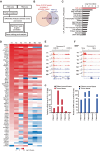
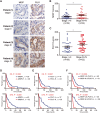
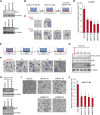
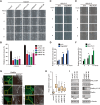
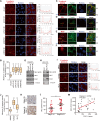
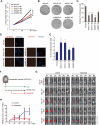
Similar articles
-
An immunostaining panel of C-reactive protein, N-cadherin, and S100 calcium binding protein P is useful for intrahepatic cholangiocarcinoma subtyping.Hum Pathol. 2021 Mar;109:45-52. doi: 10.1016/j.humpath.2020.12.005. Epub 2020 Dec 13. Hum Pathol. 2021. PMID: 33321161
-
Loss of E-cadherin promotes migration and invasion of cholangiocarcinoma cells and serves as a potential marker of metastasis.Tumour Biol. 2014 Sep;35(9):8645-52. doi: 10.1007/s13277-014-2087-6. Epub 2014 May 28. Tumour Biol. 2014. PMID: 24867095
-
Epigenetic dysregulation-mediated COL12A1 upregulation predicts worse outcome in intrahepatic cholangiocarcinoma patients.Clin Epigenetics. 2023 Jan 24;15(1):13. doi: 10.1186/s13148-022-01413-5. Clin Epigenetics. 2023. PMID: 36694230 Free PMC article.
-
Intrahepatic cholangiocarcinoma: Tumour heterogeneity and its clinical relevance.Clin Mol Hepatol. 2022 Jul;28(3):396-407. doi: 10.3350/cmh.2021.0287. Epub 2022 Jan 14. Clin Mol Hepatol. 2022. PMID: 35032970 Free PMC article. Review.
-
Molecular diagnosis of intrahepatic cholangiocarcinoma.J Hepatobiliary Pancreat Sci. 2015 Feb;22(2):114-23. doi: 10.1002/jhbp.156. Epub 2014 Sep 29. J Hepatobiliary Pancreat Sci. 2015. PMID: 25267595 Free PMC article. Review.
Cited by
-
Identification of PANoptosis-relevant subgroups and predicting signature to evaluate the prognosis and immune landscape of patients with biliary tract cancer.Hepatol Int. 2024 Dec;18(6):1792-1803. doi: 10.1007/s12072-024-10718-x. Epub 2024 Aug 10. Hepatol Int. 2024. PMID: 39127853 Free PMC article.
-
MISP Is Overexpressed in Intestinal Metaplasia and Gastric Cancer.Curr Oncol. 2024 May 14;31(5):2769-2779. doi: 10.3390/curroncol31050210. Curr Oncol. 2024. PMID: 38785491 Free PMC article.
References
-
- Valle JW, Lamarca A, Goyal L, Barriuso J, Zhu AX. New horizons for precision medicine in biliary tract cancers. Cancer Discov. 2017;7:943–62. doi: 10.1158/2159-8290.CD-17-0245. - DOI - PMC - PubMed
Publication types
MeSH terms
Substances
Grants and funding
LinkOut - more resources
Full Text Sources
Medical
Research Materials
Miscellaneous

